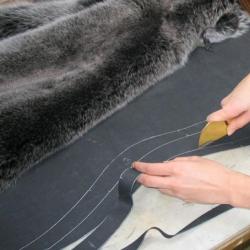"Magic electricity" lesson plan on the world around us (preparatory group) on the topic. Short-term educational practice Call (electronic constructor “Znatok”) short-term educational practice
Municipal autonomous preschool educational institution "Kindergarten No. 88"
Short-term educational internship
Call (electronic designer “Connoisseur”)
(Secondary and preparatory group)
Educator: Virginia Zigmantovna Girtaite
Berezniki
Educational program passport
Short-term educational practice
1 lesson.
Bicycle call.
Progress of the lesson
The teacher walks around the group with a bell and rings it. Attracts children's attention.
Educator:
I wonder where the sound is coming from?
He turns the bell in his hands and tries to look inside.
Educator:
Guys, are you wondering how the call works?, how can we control the sound?
Children:
Yes, interestingly, we ourselves can make different sounds.
Educator:
I suggest you make the call yourself
Children:
How?
Children offer their options on how to make a call.
Educator:
I want to introduce you to an unusual designer. It's called "The Connoisseur".
He brings construction sets into the group, and the children sit at the tables. They open them and examine them.
Educator:
Why do you think it has this name?
Children's answers.
Do you guys understand this constructor? Is it similar to the constructors we have in our group?
Children's answers.
Educator:
The guys in front of us are presented with elements with the help of which we can assemble a circuit, using the same principle, engineers (scientists) assembled our bell, it’s just that their parts are small, and ours are large.
But first, let's study what the parts are called. You can pick them up, look at them, twist them, twirl them, BUT IT IS IMPORTANT TO PLACE THEM IN THE CELL IN WHICH THIS PART WAS LOCATED.
Educator:
Let's start studying. Guys, how do the parts differ from each other?
Children:
Color, size, and inscription
Educator:
Right.
We will call the blue parts wires. And the points on them are called connecting terminals.
We also need a red part, a loudspeaker (speaker) and a battery (it is important that the teacher demonstrates each part, and the children find it in their sets). Guys, remember where each part is, this is important.
Also, when collecting sound, like in a call, we will need a Green switch. We don't need the rest of the details. They are needed to collect other circuits. (Pages 2 and 3 instructions). Children also need to be told the rules on page 1. (1 and 2)
Guys, today I introduced you to an interesting constructor, we looked at all the details, and now I will show you how to assemble a bell. The teacher begins to collect, the children, if desired, can also collect after the teacher (If the children are prepared). And now I invite you to try our detail in action. Children take turns pressing the button and a sound is made. They share their impressions.
Our acquaintance with the designer has come to an end for today. I suggest assembling the construction sets, making sure that all the details are in their places.
Expected Result
Knowledge of doorbell circuit assembly
Lesson 2.
Designer expert (one for 2 children is possible)Instructions (diagrams) for the designer “Connoisseur”
Bicycle call.
Progress of the lesson
Guys, today I brought you the “Connoisseur” construction set. Let's remember the diagram of what item we made? What are the construction parts called?
Children's answers.
And now I suggest you repeat my scheme for a simple doorbell.
Open page 8 of the instructions and begin assembly.
The teacher pronounces each step.
Now we have completed the assembly, let's press the button and check if we have connected everything correctly.
Guys, what difficulties did you experience in assembling the call?
Children's answers.
Now let's look at our diagrams and don't forget to put each part in its own cell.
Expected Result
Assembled doorbell circuit.
Lesson 3.
Designer expert (one for 2 children is possible)Instructions (diagrams) for the designer “Connoisseur”
Bicycle call.
Simple call
Rags
Pipettes
water
Progress of the lesson
Guys, look how many calls I have, let's look at them. All of them are controlled by pressing a button or lever. Did you know that you can make a call that is controlled by water? Children's answers.
Today we will make such a call to you. But instead of a green switch, we need a touch plate (yellow). The teacher must demonstrate the detail.
Let's take the “Connoisseur” constructor and open the diagram of a familiar call, page 8
Let's start assembling. The teacher comments on his every step.
Now we have put together a diagram of what we will need to launch if we made a “water-controlled doorbell”.
Children's answers.
I suggest looking at how it works first. The teacher first drips a drop of water onto his model. Then he offers to do it for the children.
Guys, which call did you like better? Which call has a more complex circuit? Children's answers.
Now let's look at our diagrams and don't forget to put each part in its own cell. And today it is important to wipe the part with a rag on which water has been dripped.
Expected Result
Assembled diagram of a water-controlled doorbell.
Lesson 4.
Designer expert (one for 2 children is possible)Instructions (diagrams) for the designer “Connoisseur”
Bicycle call.
Simple call
Bell or other bells.
Progress of the lesson
Guys, what kind of calls did we collect? How were they controlled?
Children's answers.
Today I suggest you assemble a circuit for a sound-controlled doorbell. What sound can we use? Children's answers. Correctly, we can clap our hands loudly, or shout loudly.
To do this, we need a new part, called a piezo emitter (yellow)
We begin by assembling the bell that is already familiar to us, now we connect the piezo emitter between terminals A and B.
Let's try how it works for us.
Guys, we met the designer “Connoisseur”. Tell us what the parts are called, diagrams of what objects we made, what we controlled? Children's answers.
The teacher summarizes all lessons.
Expected Result
Assembled circuit of a sound-controlled doorbell.
Tasks:
- Arouse children's interest in research when using the electronic constructor "Connoisseur".
- Continue to teach children to read diagrams and use them to assemble working mechanisms.
- To develop children's skills in rational design and modeling, design thinking and creative initiative.
- Develop cooperation and partnership skills in children. Support and strengthen children's self-confidence and their capabilities.
- Develop empathy: induce in children a sense of responsiveness to those who are in difficult life situations and need help.
Material and equipment:
- Laptop, presentation for class
- Electronic construction kit “Connoisseur” - 12 sets
- Schemes for the designer
- Audio recording – Morse code
Progress of the lesson
Children enter the group. Greet guests.
Educator: Guys, the guests came to see how interesting you can play and practice.
The signal sounds SOS .
Educator: Children, this is a distress signal. This signal is transmitted by an unmanned space station: “The station’s electronics have failed: there is no lighting, the cooling system has stopped working, sound sensors are not working. We urgently need help from a team of design engineers!”
Educator: How can you help an unmanned station? What suggestions do you have?
The children answer.
Educator: I suggest you try yourself as a design engineer. You will fly to the space station and help repair and restore electronics. What will we fly on? On a spaceship!
Educator: Guys, do we need some kind of repair kit to work at the station? What can we use in our work? (electronic designer “Connoisseur”).
Grab your construction sets and get ready to go. Is everyone ready? Let's fly!
(an image of a spaceship appears on the interactive whiteboard screen)
Educator: Attention children! We are docking with an uncrewed space station. Guys, we need to go to the station, but it’s very dark there! What should I do?
Children: The first thing you need to do is restore the lighting!
Educator: Right! Engineers, in front of you on the screen is the “Lamp” diagram. But since the electronics have not yet been restored and the switches do not work, I suggest you make a lamp controlled by a magnet. What part can replace the switch?
Child: to the reed switch.
Educator: What is a reed switch?
Children: a magnetically controlled contact or button that operates from a magnet. If you place a magnet near the reed switch, the lamp will light up. If the magnet is removed, the lamp will go out. Get to work!
Children assemble an electrical circuit called a “Lamp controlled by a magnet.”
Educator: Well done! You completed the task, fixed the lighting. Here comes the second compartment, and it’s very hot here! The cooling system is not working! What to do?
Children: I need to assemble a fan!
Educator: engineers, to assemble a powerful fan, a diagram will help you. Attention to the screen.
Children assemble a flying propeller circuit.
Educator: Guys, to prevent the propeller from taking off, you need to change the polarity of the electric motor connection (swap “plus” to “minus”) and install the propeller on it. Click the button. You can see that the direction of the propeller has been reversed. He can no longer take off and has turned into a powerful fan.
Children assemble an electrical circuit "Powerful Fan"
Educator: Well done! And you completed this task, you repaired the cooling system. Now the station is light and cool! You can dance.
Physical exercise “I am a rocket”
We move on to the third compartment, in which we need to restore the sound sensors. You and I have created many audio electrical circuits. And since we are in outer space, I suggest you assemble a sound electrical circuit “Star Wars sounds, manually controlled.” There is a new circuit in front of you, look carefully at the electrical series, the polarity relationship and assemble the circuit.
Children assembling an electrical circuit "Star Wars Sounds, Manually Controlled."
Educator: Amazing! The sound sensors have been restored, all electronics are working properly, and we can safely go home.
Morse code signals sound, the teacher deciphers: “Dear guys, thank you very much. But I really want you to make a spare power supply generator for the station, which will supply current, light, and heat in case of an emergency.”
Children each collect their own electrical circuit and combine these circuits into a spare power generator. Demonstrate his work.
Educator: Children, I suggest you collect repair kits and go to kindergarten. Come into our spaceship. Take a seat, fasten your seat belts. Let's fly.
Educator: Here we are back in kindergarten. You did a great job today. Your technical knowledge and skills helped save the unmanned station! Children, what do you think you did best? What are you proud of?
Children say goodbye to guests.
Communication with children during the lesson.
An electric motor is a special device that converts electrical energy into mechanical energy. Why is this necessary? Only in this case is it possible to make various machines and mechanisms work as a whole.
Fan. There are many different parts in the world of electronics, and a fan is just a motor with a propeller, but the fact is that all these parts get very hot during operation! This is where the fan comes to the rescue. It cools the devices from the inside with air flow and if it does not work well, the device may turn off or break!
Piezo emitter. A device for reproducing sound.
Terminal. This is a clamp, it is used to secure wires to a power source or other wires.
An LED is a small electronic element that emits light.
Reed switch is a magnetically controlled contact.
" is a Russian designer who introduces children to electronics. The box is marked 5+, but under adult supervision you can start earlier. The main thing is to explain why it is so important to monitor the location of the pros and cons on the parts. And don’t feel sorry for the toy when the child moves on to his own experiments.
Equipment
The construction sets are available in several versions; the editor has received a set “B” for the first steps in electronics, consisting of 18 parts.

The set includes:
- instructions;
- integrated circuits with sounds of special vehicles (ambulance, fire or police car);
- speakers;
- resistors;
- transistors;
- diodes;
- switches;
- conductors;
- power unit.
By the way, this construction set comes with batteries. It’s a small thing, but it’s nice: they forget to put them in some toys that require food.
How the constructor works
The principle is simple: large, bright parts are installed on a durable plastic board. No soldering required. The connections between the parts and the board look and work like snap fasteners on clothing. Even four-year-old children can handle them.

The role of wires here is not soft, bendable and unruly cables, but rigid structures of a fixed length.
The instructions show how to assemble 15 different circuits so that the diodes flicker and the speaker begins to make the sounds of special services vehicles.
There is no talk of independent play. To understand what works and how, it is not enough just to be able to read, you need to be able to read domestic instructions. Some descriptions for the diagrams are drawn up in such a way that not every adult will understand the first time; it is better to focus on the picture.

A huge advantage of such construction sets is that you can build other games around them. Don’t just assemble, look at, disassemble a diagram, but play along with cars, dolls and everything that is already in the children’s room.
For children over 10–11 years old, the construction set in this particular set is boring, just for one use. But if you give them more details, then interest will increase.
The good and the bad
The advantages of purchasing a designer set are undeniable.
- Development of fine motor skills. Even if you yourself have no idea why these diagrams are needed, at least think about fine motor skills. Tons of research have been written about the importance and need of developing finger coordination. Crafts, sewing, drawing, writing... why not help with a designer?
- Education. No comments here. It is clear that much of the knowledge acquired at the age of five will not remain in memory if it is not consolidated. But they will firmly fuse into what is called the background.
- Reason for communication. As we have already mentioned, a preschooler cannot master the construction set without help; parents are needed. Frankly, many children's games for moms and dads are downright boring. “The Connoisseur” will not let either adults or children get bored.
The construction set is available in different versions; you can buy new boxes and combine the parts from them into something grandiose.

There is only one minus. Like all toys for preschoolers, the construction set breaks. The creators tried to make it as strong as possible, but everything that was soldered sooner or later breaks off. True, I don’t yet know of a single toy that a five-year-old child cannot break.
Why is it necessary to buy “Connoisseur”? Because the child will get used to the fact that there are electronics in the world, that it is possible to assemble complex structures. And there will be happiness from this (that is, light, sound and other effects). In a few years, if he doesn’t demand more, then at least he won’t be afraid when you give him “ ”, “ ” or Arduino.
The life hacker thanks the Medgadgets.ru store for providing the device for testing.
Summary of an educational lesson in the form of experimental actions.
16.12.2013.
Gordienko I.V.
(preparatory group of combined orientation)
Topic: "Magic Electricity"
Software tasks:
Educational:
- Summarize children's knowledge about electricity;
- Introduce children to the cause and manifestation of static electricity;
- Fix the rules for using electrical appliances, observing safety measures.
Educational:
- Develop a desire for search and cognitive activity;
- Develop mental activity, the ability to observe, analyze, and draw conclusions.
Educational:
- Cultivate interest in learning about the world around us;
- Inspire joy in discoveries gained from experiences.
- Develop the ability to work in a team.
Materials for the lesson:
- Battery powered robot.
- 2 pictures for the puzzle game “What color is the plug on an electrical appliance”
- Equipment for experiments:
Experience 1 Plastic combs according to the number of children, finely chopped paper on trays, several woolen scarves.
Experience 2 Balloons according to the number of children
Experience 3 Electrical circuit with a simple pencil from the electronic designer "Connoisseur"
GCD move:
1.- Guys, your favorite toy has come to visit you. Let's play with her. Why doesn't the robot move? What's happened?(children's statements)
You are right, there is no battery.
Now let's try to install the battery (minus to minus, plus to plus)
The toy worked! Why? What kind of power is hidden in batteries?
When we installed the battery, an electric current flowed through the toy and it started working.
Guys, do we have electricity in our group?
How did you guess? (the group has sockets, switches, wires, light bulbs)
- What works with electricity? ( electrical appliances)
- How do electrical appliances help people? ( children's answers)
- Well done, I agree with you, electrical appliances are our best helpers, without them it would be very difficult for a person.
2. Do you think the electricity that electrical appliances use is dangerous for humans? ( children's answers)
We can talk about this with the help of gymnastics.
Finger gymnastics:
Teapot, chandelier, refrigerator (bend 1 finger for each word)
Hairdryer, stove, tape recorder,
Vacuum cleaner, microwave
And mobile phone
This is an e-lec-ro-pri-bo-ry, (clap fist-palm)
Current flows through the wires. (walk their fingers on the table)
The current can be evil and good,
Here's what we remind you:
What without dad and without mom (bend the fingers on both hands)
Nothing can be turned on.
Electricity is dangerous - (show with hands)
Everyone should know this! (hands to the side)
If handled incorrectly, our helpers and friends can turn into our enemies. Always be careful and careful around electricity. It's dangerous.
3.- But there is electricity that is harmless, quiet, unnoticeable, it lives everywhere, on its own. And if you catch him, you can play with him in a very interesting way.
I invite you to the land of “Magic Objects”, where we will learn to catch good electricity.
What would you like to travel with? (for example, on a rocket, or a bus, etc.)
This is our bus (there is one or several hoops on the floor, depending on the number of children)
The teacher is the first to enter the bus and invites the child: -Vitya, I would be glad to see you on the bus...etc. The children call all the remaining children one by one.
Here we are in a magical land.
Experience 1. At the tables. Finely chopped paper lies on everyone's tray.
Bring the comb to the paper. Is something happening to the paper? ( No)
- how to make paper attract to comb? (children's assumptions)
Now we will make these ordinary combs magical, electric. Take a wool scarf and rub it on your comb. Slowly bring it to the pieces of paper.
What happens to the paper? (the paper was attracted to the comb)
How did the hairbrush become electric? (it was rubbed with a scarf)
Conclusion: Electricity lives in clothes.
Experience 2.
Look, there is a ball hanging on the wall and multi-colored balls on the floor. Let's hang them on the wall too (children try to hang the balls on the wall)
Why does this ball hang and yours fall? (children's assumptions)
Let's turn our balls into magic ones. Look how. You need to rub the ball on your hair and apply it to the wall with the side you rubbed it with. All the balls are hanging. So our balls became magical.
How did you make them like this? ( children's answers)
Conclusion: There is electricity in our hair, we caught it when we started rubbing the ball on our hair, it became electric, so it was attracted to the wall.
Experience 3. I also want to be a wizard, I’ll show you an interesting trick (children sit around the table).
Here an electrical circuit is made on the board. But one link is missing, and without it the light bulb will not light. But since I'm a wizard. Instead of an electrical wire, I will place a simple pencil in the circuit (the light comes on)
Conclusion: There is electricity even in the lead of a simple pencil.
Did you like the trick? This is how you can play with good electricity.
A moment of relaxation.
Now take the balls, hold them close to you and lie down more comfortably on the carpet. Close your eyes. And our magic balls will help us return to kindergarten. (relax music sounds).
Imagine that you are flying in a hot air balloon. The sun is shining brightly, a light breeze is blowing. We breathe in its clean, fresh air, we feel good and pleasant. We open our eyes. Here we are in kindergarten.
Did you enjoy our trip? Now you can play with balloons.
ROUTING
short-term educational practice
| KOP name | A journey into the world of light and sound. (constructor “Connoisseur”) |
| Fedoseeva N.V. |
|
| Age of children for whom KOP TN is designed | |
| Main idea (easy to understand, clearly and concisely formulated) | Existing skill in light construction and the ability to create electrical circuits using the “Connoisseur” kit. External result– can be created, researched and applied in real practical activities. Internal result– experience in creating electrical circuits with the burning of light and the appearance of sound. |
| Purpose of KOP TN | |
| Number of hours | |
| Materials used (clear and understandable) | Constructor "Connoisseur" Electrical circuit assembly diagrams. |
| Types of activities for preschoolers: | Educational and research (assembling an electrical circuit, a lamp controlled by a magnet, a flying propeller, Star Wars sounds) Communicative (communication and interaction of children when working in pairs) Motor (physical training) |
| The final result of the KOP TN | Learn how to assemble electrical circuits according to a diagram. |
| Schemes, algorithms | Circuit diagrams. |
Brief description of the contents of the CPC
| Lesson topic | Activities of a teacher | Children's activities | Planned result |
|
| 1 lesson. "Magnet controlled lamp" | Introduce the elements and parts of an electronic designer; Learn how to assemble simple circuits; Introduce the features of installing batteries. | Presentation of individual parts, explanation of symbols; Explanation of the objectives of the activity; Through the game, introduce the details of the designer (For example, what part is number 5 or find part number 14, etc.) Invite the children to create a diagram based on the model | Examination of designer parts; Finding parts during the game; Assembling the circuit “Lamp controlled by a magnet” | Practice children's skills in assembling electrical circuits according to a diagram. |
| Lesson 2. "Flying Propeller" | Demonstration of an example of assembling an electrical circuit Help children assemble circuits. | Selection of parts for assembly according to a given scheme; Assembling the “Flying Propeller” diagram |
||
| Lesson 3 | Practice the ability to read a diagram; | Explanation of individual details; connection methods Offer to assemble the circuit yourself; Provide assistance in assembling the circuit. | Getting to know the scheme: "Sound Controlled Star Wars Sounds" | |
| Lesson 4. Assembling the circuit according to your own plans. | Practice the ability to read a diagram; | Explanation of individual details; connection methods; Offer to assemble a circuit according to your own ideas. | Examination of parts and elements of the designer; Assemble the circuit according to your own plans, use additional parts Experimenting with the model |
Practice results.
As a result of the short-term educational practice “Journey to the World of Sound and Light”, children will receive an initial understanding of electrical engineering and learn how to assemble electrical circuits of various purposes and complexity. The children will get acquainted with the basics of electronics. This practice promotes the development of imagination, spatial orientation, the formation of abstract and logical thinking, the accumulation of useful knowledge, and makes it possible to realize creative abilities to the maximum.
This practice aroused interest among children. The children actively took part and asked questions during the construction process. They offered their own solutions. They created diagrams according to their own plans. They actively shared their impressions and acquired knowledge with other children, as well as with parents.






